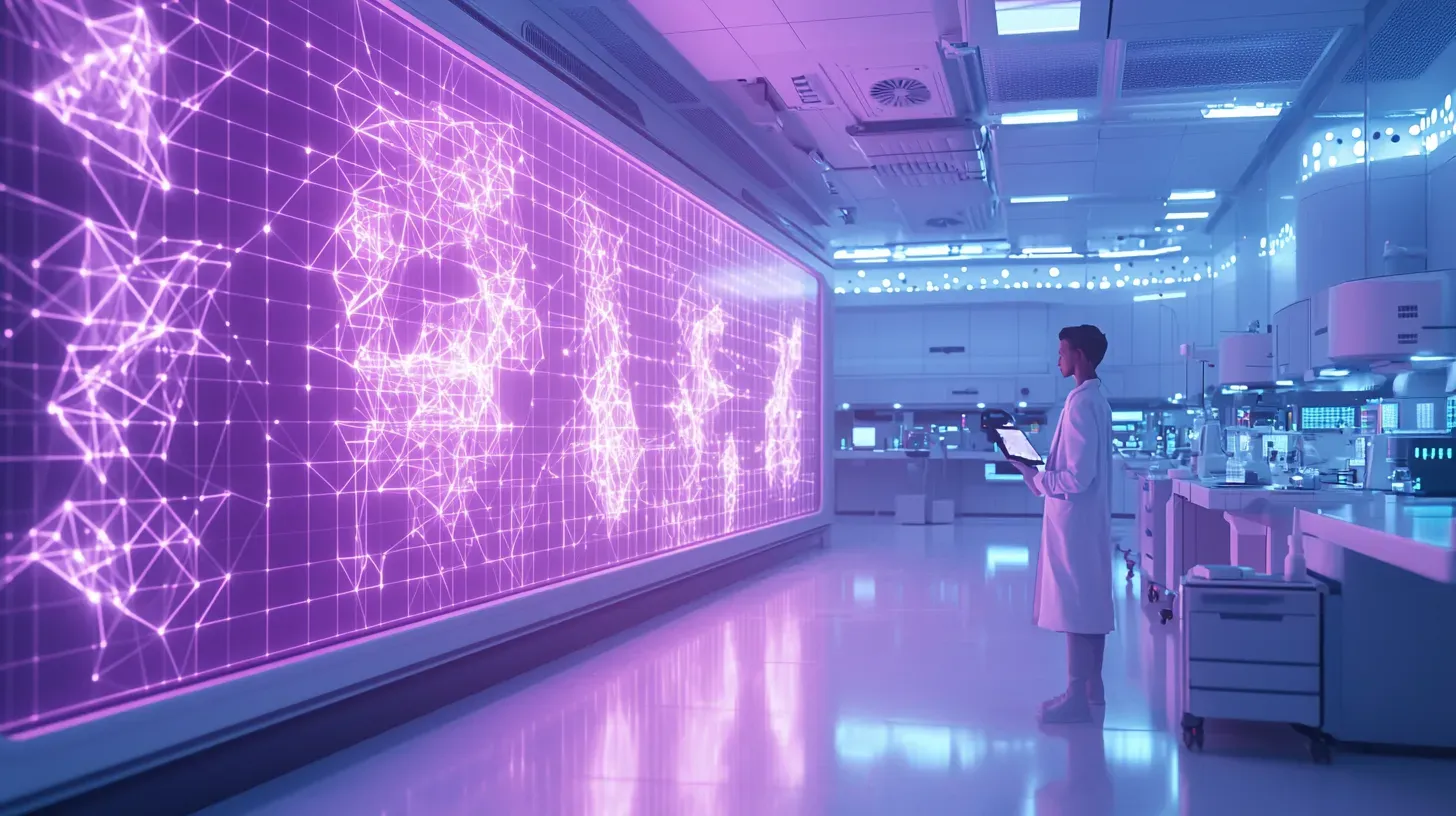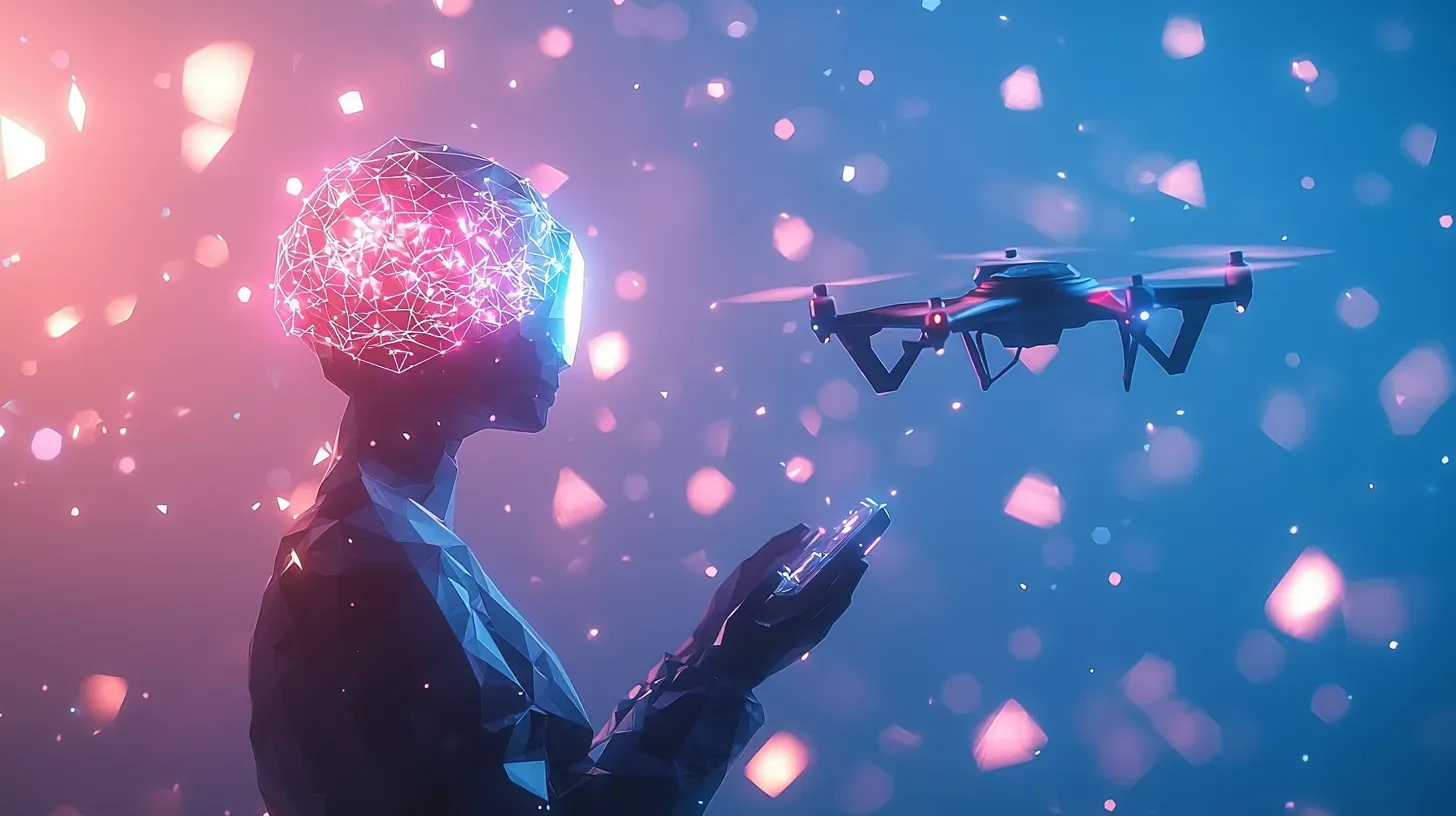Understanding Drones with the Help of an Innovation Futurist

Understanding Drones with the Help of an Innovation Futurist
Drones, once a futuristic concept, have become increasingly prevalent in our society. From aerial surveillance to package delivery, drones are revolutionizing various industries. In order to truly understand the potential impact and future of drones, we need to turn to the expertise of an innovation futurist. Combining their knowledge of emerging technologies with their visionary thinking, innovation futurists provide invaluable insights into the possibilities and limitations of drone technology.
Understanding the Role of Drones in the Future
Drones are no longer just toys for hobbyists or tools for military operations. They have evolved into versatile devices that are reshaping the way we live, work, and interact. An innovation futurist can shed light on the potential applications of drones in the near and distant future.
One of the most promising roles for drones is in the realm of transportation and delivery. Imagine a world where drones deliver packages to your doorstep within minutes. With their ability to navigate through traffic and avoid congestion, drones have the potential to revolutionize the logistics industry.
Moreover, drones can also play a crucial role in disaster management and emergency response. Their ability to access hard-to-reach areas and gather real-time data can aid in assessing damage and coordinating rescue efforts. From assessing the aftermath of natural disasters to delivering medical supplies to remote areas, drones can save lives and make a significant impact.
Furthermore, the use of drones in agriculture is another area where their potential is being explored. With the ability to monitor crops, assess soil conditions, and even spray pesticides, drones can help farmers optimize their farming practices. They can provide valuable insights into crop health, irrigation needs, and pest infestations, allowing farmers to make data-driven decisions and increase their crop yields.
In addition to their practical applications, drones are also being used in the entertainment industry. Aerial photography and videography have become increasingly popular, thanks to drones. They offer a unique perspective and the ability to capture stunning aerial shots that were once only possible with expensive equipment and helicopters. From capturing breathtaking landscapes to filming action-packed scenes, drones have opened up new creative possibilities for filmmakers, photographers, and content creators.
Moreover, the use of drones in scientific research and exploration is expanding. They can be equipped with various sensors and instruments to collect data in remote or hazardous environments. Whether it's studying wildlife behavior, monitoring climate change, or exploring uncharted territories, drones are becoming valuable tools for scientists and researchers.
Additionally, drones are being utilized in the construction industry for surveying and mapping purposes. They can quickly and accurately capture aerial imagery and create 3D models of construction sites. This technology enables architects, engineers, and construction managers to have a better understanding of the project, identify potential issues, and improve overall efficiency.
Lastly, the recreational use of drones is on the rise. Many people are now enjoying flying drones as a hobby, participating in drone racing competitions, and even using them for aerial photography or videography as a personal creative outlet. The accessibility and affordability of consumer drones have made it possible for individuals to explore the skies and capture stunning visuals from a whole new perspective.
How an Innovation Futurist Interprets Drone Technology
Understanding drone technology goes beyond knowing how to operate a remote control. An innovation futurist can provide deep insights into the underlying technological advancements and how they shape the capabilities of drones.
One key aspect of drone technology is their autonomous capabilities. Through artificial intelligence and machine learning, drones are becoming increasingly capable of performing complex tasks without human intervention. An innovation futurist can explain the potential benefits and risks associated with autonomous drones, as well as the ethical considerations that come with their use.
Moreover, an innovation futurist can delve into the fascinating world of drone sensors. These sensors play a crucial role in enabling drones to navigate their surroundings and gather data. From GPS and altimeters to infrared cameras and ultrasonic sensors, drones are equipped with a wide range of sensors that allow them to perceive their environment with remarkable precision. An innovation futurist can explore the different types of sensors used in drones and discuss how they contribute to their overall functionality.
Furthermore, an innovation futurist can unravel the possibilities of drone swarm technology. By coordinating and collaborating with each other, drones can work together to achieve tasks that would be impossible for a single drone. These swarms of drones can be employed in fields such as agriculture, where they can efficiently monitor crops and optimize farming practices. An innovation futurist can delve into the intricacies of swarm behavior, explaining how drones communicate and synchronize their actions to accomplish complex objectives.
Additionally, an innovation futurist can shed light on the advancements in drone battery technology. The ability to fly for extended periods is crucial for many drone applications, and innovation in battery technology has played a significant role in expanding the capabilities of drones. An innovation futurist can discuss the various types of batteries used in drones, such as lithium-ion and hydrogen fuel cells, and explore the ongoing research and development efforts aimed at improving drone battery life and efficiency.
Another aspect that an innovation futurist can explore is the integration of drones with other emerging technologies. For example, drones can be equipped with advanced imaging systems, such as thermal cameras and multispectral sensors, to capture valuable data for various industries. An innovation futurist can discuss the potential applications of these integrated technologies, from search and rescue operations to environmental monitoring and infrastructure inspections.
Furthermore, an innovation futurist can analyze the regulatory landscape surrounding drone technology. As drones become more prevalent, governments and regulatory bodies are developing guidelines and policies to ensure safe and responsible drone operations. An innovation futurist can provide insights into the current regulatory frameworks and discuss the challenges and opportunities they present for the future of drone technology.
In conclusion, an innovation futurist brings a wealth of knowledge and expertise to the interpretation of drone technology. By exploring the autonomous capabilities, sensor technology, swarm behavior, battery advancements, integration with other technologies, and regulatory landscape, an innovation futurist can provide a comprehensive understanding of the present and future possibilities of drones.
Impact of Drones on Various Industries
The advent of drones has had a profound impact on numerous industries, revolutionizing the way tasks are performed and opening up new possibilities for innovation and efficiency. By partnering with an innovation futurist, we can gain valuable insights into how drones are transforming these sectors and what lies ahead.
In the realm of agriculture, drones equipped with specialized cameras and sensors have emerged as powerful tools for farmers. These drones can provide real-time data about crop health, moisture levels, and pest infestations. By analyzing this data, farmers can make informed decisions about irrigation, pesticide usage, and crop rotation, leading to optimized yield and reduced resources wastage. The ability of drones to cover large areas quickly and efficiently makes them an invaluable asset in modern farming practices.
Similarly, the construction industry has also witnessed a significant transformation with the integration of drones. These unmanned aerial vehicles (UAVs) are now being used for surveying large areas and monitoring construction progress. By capturing high-resolution aerial imagery, drones assist in identifying potential issues such as structural weaknesses or deviations from the original design. This early detection of problems allows construction teams to take corrective measures promptly, minimizing delays and cost overruns. Moreover, drones enable project managers to optimize workflow and resource allocation, resulting in improved efficiency and productivity.
The entertainment industry, particularly filmmaking and photography, has been greatly influenced by the introduction of drones. In the past, capturing aerial shots required expensive helicopter rentals or the use of cranes. However, drones have completely changed the game by offering a more cost-effective and flexible solution. With their maneuverability and ability to capture unique perspectives, drones provide filmmakers with endless creative possibilities. They can effortlessly navigate through tight spaces, fly at various altitudes, and capture stunning aerial footage that adds a whole new dimension to storytelling. Whether it's a thrilling chase scene or a breathtaking landscape shot, drones have become an indispensable tool for filmmakers and photographers alike.
Furthermore, the applications of drones extend beyond just agriculture, construction, and entertainment. They are also being utilized in search and rescue operations, environmental monitoring, infrastructure inspection, and even package delivery. The versatility and adaptability of drones make them a valuable asset in a wide range of industries, constantly pushing the boundaries of what is possible.
As we continue to explore the potential of drones, it is clear that their impact on various industries will only continue to grow. With advancements in technology and the development of new applications, drones are poised to revolutionize the way we work, create, and live.
An Innovation Futurist's Perspective on Drones Regulation and Privacy Issues
As drones become more prevalent, concerns regarding their regulation and potential privacy violations arise. An innovation futurist can offer a nuanced perspective on these issues, taking into account the legal and ethical considerations surrounding drone usage.
Regulation is crucial to ensure responsible and safe drone operations. An innovation futurist can provide insights into the current regulations governing drones and the challenges faced by regulatory bodies. Furthermore, they can discuss the potential future regulations that need to be implemented to strike a balance between innovation and public safety.
Privacy is another significant concern when it comes to drones. With their ability to capture high-resolution images and videos, drones have the potential to infringe upon individual privacy. An innovation futurist can delve into the ethical implications of drone surveillance and discuss the importance of establishing clear boundaries to protect personal privacy rights.
The Future of Drones: Predictions and Possibilities
Looking ahead, an innovation futurist can provide us with intriguing predictions and possibilities for the future of drones. From the integration of artificial intelligence and blockchain technology to the development of more efficient and sustainable power sources, the potential advancements in drone technology are vast.
One exciting possibility is the integration of drones with augmented reality (AR) technology. Imagine a world where drones can project virtual objects into our physical environment, enhancing our perception of reality. This fusion of drones and AR opens up endless opportunities for entertainment, education, and even remote collaboration.
Another area to explore is the potential for urban drone infrastructure. As urbanization continues to increase, drones could play a vital role in creating an efficient and sustainable transportation network. From aerial taxis to drone delivery hubs, the sky's the limit for the future of urban drone infrastructure.
Conclusion
In conclusion, understanding drones and their future implications requires the expertise of an innovation futurist. By tapping into their knowledge and insights, we can explore the vast potential of drones across various industries. From transportation and disaster management to entertainment and urban infrastructure, drones are transforming the way we live and work. As we navigate through the evolving world of drones, the guidance of an innovation futurist will prove invaluable in shaping the responsible and impactful integration of this technology in our society.
FAQ
1. What are the potential applications of drones?
Drones have a wide range of potential applications, including transportation and delivery, disaster management and emergency response, agriculture, entertainment, scientific research and exploration, and construction. They can revolutionize industries by providing efficient and innovative solutions.
2. How do innovation futurists interpret drone technology?
Innovation futurists provide deep insights into the underlying technological advancements of drones. They explore autonomous capabilities, sensor technology, swarm behavior, battery advancements, integration with other technologies, and the regulatory landscape. They help us understand the present and future possibilities of drones.
3. What impact do drones have on various industries?
Drones have had a profound impact on numerous industries. In agriculture, they help optimize farming practices and increase crop yields. In construction, they assist in surveying and monitoring progress. In the entertainment industry, they provide unique aerial perspectives. Drones are also utilized in search and rescue operations, environmental monitoring, infrastructure inspection, and package delivery.
Contact an Innovation Futurist for your event
If you're intrigued by the potential of drones and their transformative impact on various industries, why not invite Dr Mark van Rijmenam, an esteemed Innovation Futurist, to your next event? With his deep understanding of drone technology, autonomous capabilities, sensor technology, swarm behavior, battery advancements, and regulatory landscape, Dr van Rijmenam can provide your audience with invaluable insights into the present and future possibilities of drones. His visionary thinking and expertise can open up a world of opportunities for your audience, inspiring them to leverage drone technology in innovative and responsible ways. To have Dr van Rijmenam enlighten your event with his wealth of knowledge, simply complete the form below and we will be in touch within 24 hours. Don't miss this chance to delve into the fascinating world of drones with a seasoned Innovation Futurist.
Thanks for your inquiry
We have sent you a copy of your request and we will be in touch within 24 hours on business days.
If you do not receive an email from us by then, please check your spam mailbox and whitelist email addresses from @thedigitalspeaker.com.
In the meantime, feel free to learn more about The Digital Speaker here.
Or read The Digital Speaker's latest articles here.





